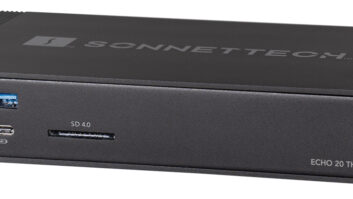Are you struggling to run a profitable service department? Do you count yourself as lucky to break even? If so, you are not alone. I have the opportunity to meet with integrators all over the country on a daily basis and this challenge comes up all the time. For many integrators, service is a cost center. And like any business department looking to improve profitability, there are two choices.
You can increase revenues through new, more profitable offerings. Or you can decrease costs by enhancing efficiency. While the ultimate goal for integrators should be to accomplish both, decreasing costs usually yields more immediate results. And your service billing practices are likely an easy place to start removing inefficiencies.
Here are three strategies to streamline your service billing that I have seen work with great effect:
1) Bill Monthly
A typical practice for many is to process invoices as service is performed. Instead, consider the option of monthly payment runs for your service department. Invoicing is a time consuming process, not to mention the tracking and collecting on accounts receivable. Billing ad-hoc creates additional inefficiencies in this already laborious process.
Switching instead to a regular monthly schedule allows you to “batch process” the work. Gathering information from your time tracking system, seeking clarification on any questionable or missing time entries, doing data entry, and sending out the invoices are all steps that can be streamlined significantly by grouping all of your service billing into monthly payment runs.
Cash flow needs may make immediate “ad-hoc” billing a necessity in some cases. Incidentally, this need for predictable cash flow is one of many reasons why a successful RMR program can improve your business footing. Ultimately, a fixed monthly billing cycle for service is a far more efficient process. It is also important to consider that regular monthly billing creates a better, more predictable experience for your clients, especially for those who utilize your services regularly.
2) Reduce the Amount of Information on the Invoice
How much and what kind of information are you including on your invoices? Many of the integrators I speak with include a substantial amount of detail about the work performed on what could otherwise be a really simple document. This extra work creates redundant information scattered across several systems in the company. Instead, consider relegating your invoicing system to the simple job of conveying the number of hours worked.
During my previous time as an integrator, we at first were hesitant about taking this step. We assumed that clients would immediately push back and demand the extra detail. We found that few did.
Like almost all integrators I meet, our relationships were built on a deep level of trust, rendering the extra invoicing detail totally unnecessary. For the few clients that did question the process, we simply ran fully detailed reports from our time tracking and/or ticketing systems. Once they were comfortable that the information was still being tracked and could be viewed upon request, few of them asked for it again. Providing the details in the rare instances they did took a few short minutes.
3) Keep Credit Cards on File
How, and how quickly, are you able to process payments? I meet with some integrators who still refuse to accept credit cards because of the payment processing fees (typically around 3%). The drive to avoid fees is understandable, particularly if your service department is struggling to generate a profit. But the decision not to accept credit cards carries two hidden costs.
First, it is an inconvenience for clients, many of whom are uncomfortable providing routing and account information for ACH payments. And honestly, does anyone enjoy the process of writing checks?
Perhaps even more importantly, accepting credit cards allows you to set up automatic payments. Combined with getting all of your service billing onto a regular monthly cycle, these automatic payment runs greatly improve your accounts receivable turnover,cash flow, and administrative efficiency.Taking all of the above into account, 3% credit card processing fees are a small price to pay.
4) Get Lean on Process
If you count yourself among those struggling to make a profit on service, look at the challenge from both angles. When it comes to increasing revenues, there are proven strategies you can use, selling premium services for example. But this may be a long play, requiring time to drive meaningful results.
In the immediate term, you can start reducing costs right away by eliminating inefficiencies. Look to your invoicing processes for some low hanging fruit. By simply consolidating payment runs, removing redundant information, and streamlining your collection, you’ll be on your way to a more profitable service department.






